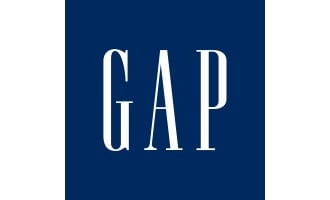Gap’s (NYSE: GPS) earnings in the fourth quarter and for the 2013 fiscal year were good enough to get modest applause from Wall Street. However, unlike other large American retailers, its revenue outside the U.S. is small — a touch more than 20% of sales. Gap has started to change that. It will open five Old Navy brand stores in China this year. Source: Wikimedia Commons
Source: Wikimedia Commons
Of Gap’s $4.58 billion in revenue posted in the last quarter, $3.5 billion came from the United States. Europe and Canada were other large contributors. As part of the plan to change this:
Continuing to grow its Old Navy brand globally, the company was scheduled to open its first Old Navy store in China on Saturday — a store in Shanghai. It will begin franchising Old Navy stores internationally, starting with the Philippines in March.
Gap will press for the same advantages as other major American companies which have moved into the world largest nation by population. The theory these firms adopt is simple. China’s middle class, created by industrial jobs, has grown into the hundreds of millions. The wages earned by these people have risen steadily. Perhaps, as has been true in the U.S. for decades, consumer spending will eventually become the largest contributor to GDP in the People’s Republic,
However, doing business in China has drawbacks. Among them is local competition, plus competition from the large numbers of American, European, and Japanese companies which already have put beachheads in the country, trying to tap into a potentially rich consumer market.
But U.S. companies, which include Walmart (NYSE: WMT) and Yum! Brands (NYSE: YUM), have faced challenges as they entered the market. China’s efforts to regulate the actions of these include protection of labor forces, which in many cases have a quasi-union status, and regulations which block companies from doing business as they do in the U.S. and Europe. Yum! recently found this out the hard way, as a small portion of the chicken its uses in its KFC franchises had food quality problems. The resulting hurricane of regulatory punishment and media attention nearly wrecked Yum!’s earnings.
The final problem Gap must overcome is if its Old Navy brand is the right one to enter China with. There is no guarantee that the Chinese consumer has American-like tastes. Starbucks (NASDAQ: SBUX) discovered this because it was not prepared to satisfy the consumer preference in China for tea over coffee. Whether Old Navy is like coffee is something Gap will find out soon enough.
Essential Tips for Investing: Sponsored
A financial advisor can help you understand the advantages and disadvantages of investment properties. Finding a qualified financial advisor doesn’t have to be hard. SmartAsset’s free tool matches you with up to three financial advisors who serve your area, and you can interview your advisor matches at no cost to decide which one is right for you. If you’re ready to find an advisor who can help you achieve your financial goals, get started now.
Investing in real estate can diversify your portfolio. But expanding your horizons may add additional costs. If you’re an investor looking to minimize expenses, consider checking out online brokerages. They often offer low investment fees, helping you maximize your profit.
Thank you for reading! Have some feedback for us?
Contact the 24/7 Wall St. editorial team.



